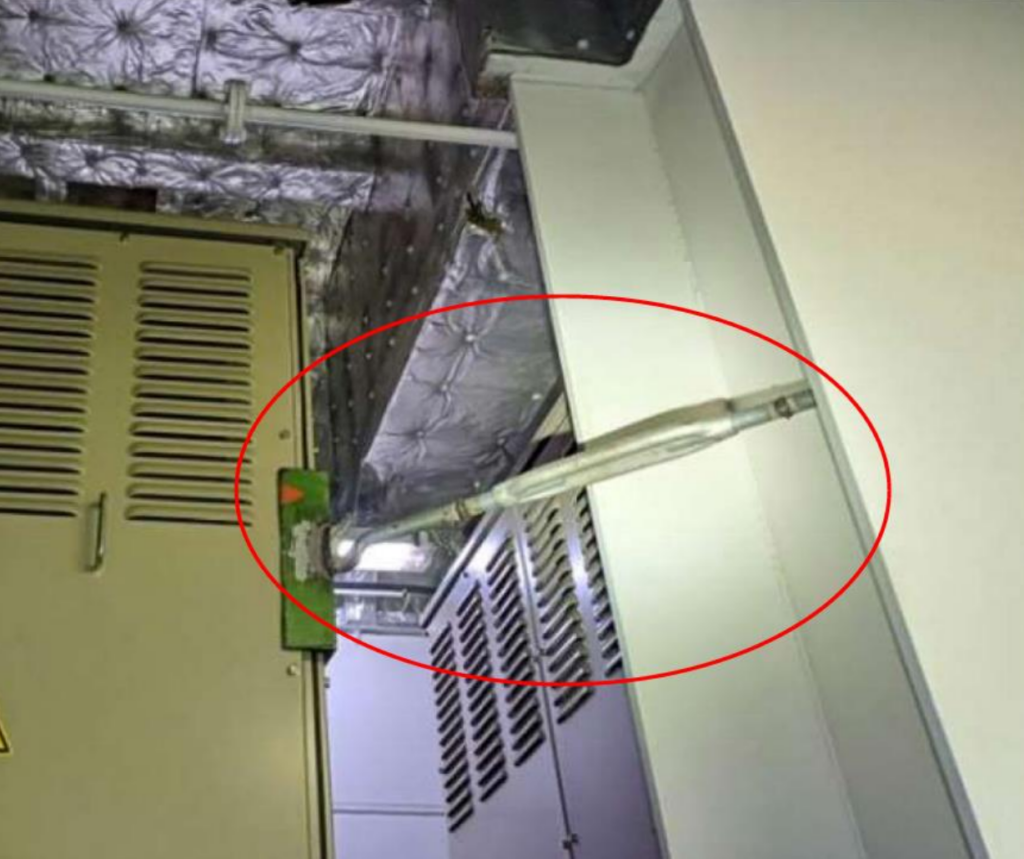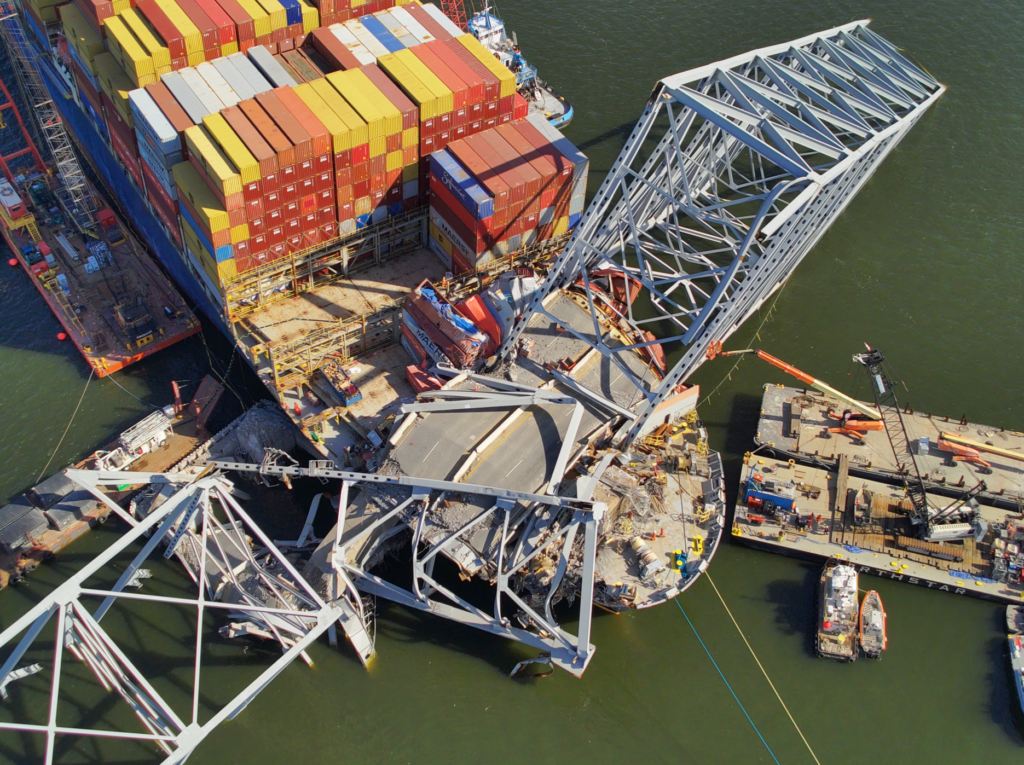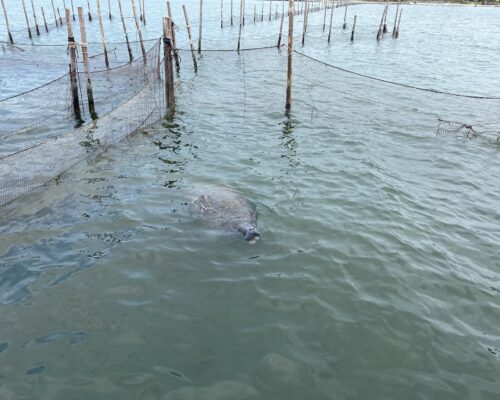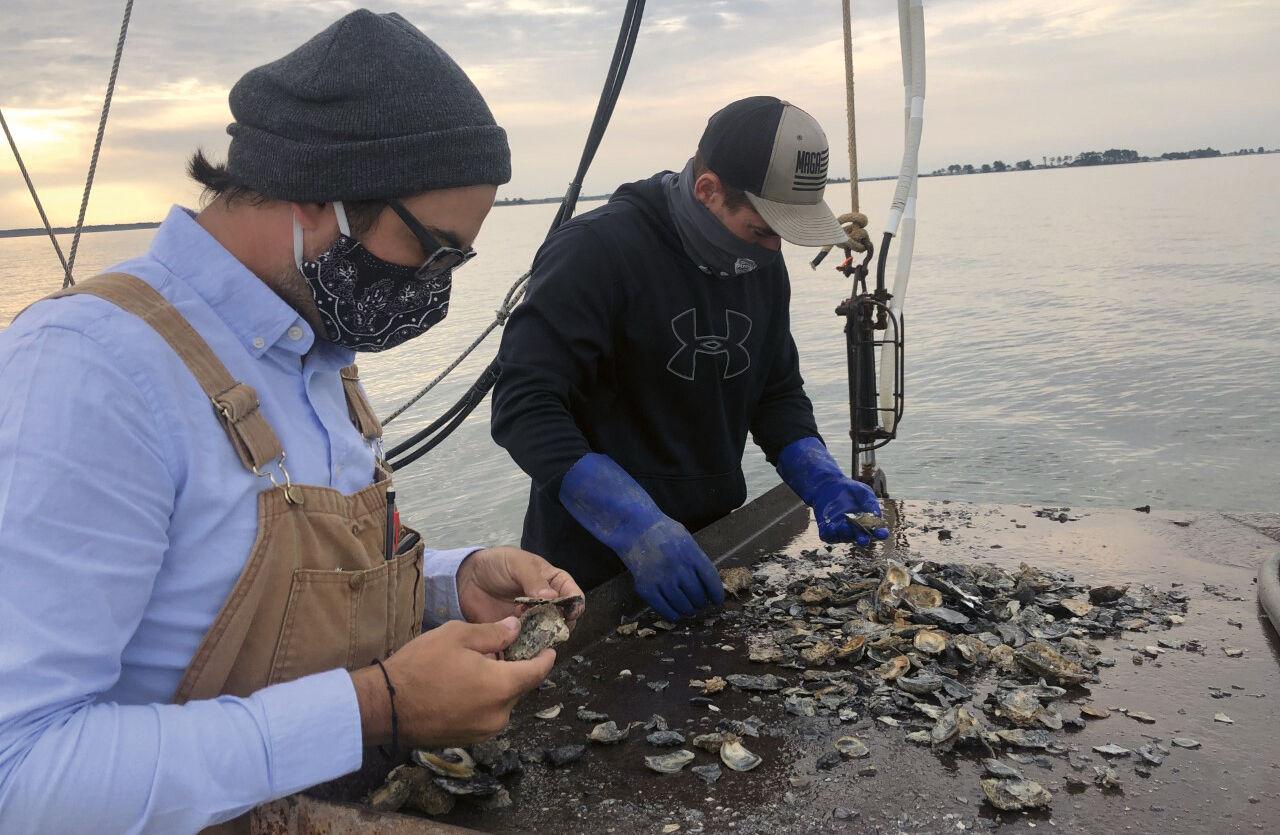As the public continues to wonder what exactly caused the M/V Dali to strike the Key Bridge, taking six lives and changing our transportation history forever, the U.S. Justice Department and Maryland Attorney General Anthony Brown put the blame squarely on negligent actions by the ship’s operators.
Both the state and the federal government have filed lawsuits in response to the Dali owners asking that their liability be limited to $44 million, the value of the ship. The Justice Department puts the damages at $100 million. The state’s may be much higher, taking into account the cost of rebuilding the bridge along with local and state economic impact, tax revenue loss and toll revenue loss.
Both civil claims were filed against Grace Ocean Private Limited and Synergy Marine Private Limited, the Singaporean corporations that owned and operated the container ship.
The Justice Department’s $100 million in damages include costs incurred to reopen access to the Port of Baltimore, a 2.5-month process that required a massive fleet of 18 barges, 22 tugboats, 13 floating cranes, 10 excavators, and four survey boats. Dozens of federal, state, and local agencies worked to remove about 50,000 tons of steel, concrete, and asphalt from the channel and from atop the ship itself. Simultaneously, crews cleared a series of ever-increasing temporary channels to allow some traffic through and minimize the economic disaster.
“With this civil claim, the Justice Department is working to ensure that the costs of clearing the channel and reopening the Port of Baltimore are borne by the companies that caused the crash, not by the American taxpayer,” said Attorney General Merrick B. Garland.
Because the bridge was owned and maintained by the state of Maryland, only the state can claim damages for the cost of replacing it. MDTA has preliminarily estimated that the rebuilding project will cost at least $1.7 billion, and that the work will not be completed until 2028.
Along with crippling the water route to the Port of Baltimore, the loss of the bridge, a critical connector, continues to be felt by local commuters.
The hit to marine cargo activities at the port has impacted state and local tax revenues, too. Maryland’s claim states that in 2023, the port supported “an estimated $643.4 million in state and local taxes ($362.9 million collected by the State, and $280.5 million collected by the county and local governments). Then there is the toll revenue that the state will lose for four years while there is no bridge, also noted in the Attorney General’s lawsuit.
Both lawsuits point out the efforts required to clean up hazardous substances discharged into the Pataspsco after the ship crashed. The state lawsuit says the Dali held 700 tons of controlled hazardous substances in at least 56 containers, some corrosive or flammable. Some of those containers ruptured, causing hazardous substances to go into the Patapsco. Some of the bridge debris and vehicles that fell into the river also sent hazardous substances into the water.
Along with the costs incurred by the state and federal governments, both the Justice Department’s and the state’s lawsuits seek punitive damages to deter the owner and operator of the Dali and other ship operators from cutting corners again that lead to disaster in the future. Both lawsuits claim the ship was unseaworthy when it left the Port of Baltimore.
“This was an entirely avoidable catastrophe, resulting from a series of eminently foreseeable errors made by the owner and operator of the DALI,” said Principal Deputy Assistant Attorney General Brian M. Boynton, head of the Justice Department’s Civil Division.
The federal lawsuit calls out several ways in which the owners and operators of the container ship failed to make it safe and seaworthy. First, there were documented “constant vibrations” above the engine room in the days leading up to the emergency, which caused loose circuitry, nuts and bolts that led to multiple power failures. Engineers noted the vibrations were so bad they were cracking equipment in the engine room and shaking loose cargo lashings.
The state lawsuit includes a photo of an improvised “turnbuckle” the crew used to dampen vibration on one of the Dali’s transformers:

The lawsuit says the ship’s owners shouldn’t have been surprised that a loss of power would result from such severe vibration problems.
You may remember the chilling livestream video of the moments before and during the ship’s impact on the bridge. You can see the Dali lose power twice. The second time, it didn’t come back on because of more corner-cutting, the federal lawsuit says.
The claim alleges that, to save money and work, the ship’s owners used a temporary flushing pump to fuel the ship’s diesel generators instead of a proper fuel pump. As stated in the lawsuit, “It was not designed to recover automatically from a blackout, a critical safety feature of the proper fuel pumps that the Dali should have been using.”
Then, two minutes before impact, the Maryland pilot gave an emergency order for the ship to release its port anchor in an effort to pull it away from the bridge. However, the lawsuit claims the Dali‘s anchor was not ready for immediate release in an emergency as required by law. The ship was half a ship’s length from the bridge by the time the anchor was dropped.
Finally, the civil claim reads, “While still waiting on the anchor, the pilot gave an order to apply full power to the bow thruster in a last-ditch attempt to push the ship away from the bridge. When nothing happened, the pilot was told the bow thruster was unavailable.”
The Justice Department sums up the series of failures this way:
“Out of negligence, mismanagement, and, at times, a desire to cut costs, they configured the ship’s electrical and mechanical systems in a way that prevented those systems from being able to quickly restore propulsion and steering after a power outage. As a result, when the DALI lost power, a cascading set of failures led to disaster,” said Principal Deputy Associate Attorney General Benjamin C. Mizer.
According to the Maryland Attorney General and the Justice Department, the crew was ill-prepared, the vessel unseaworthy for U.S. waterways, and yet the ship’s owners still moved forward, cutting corners to conduct business in American ports.
Attorney General Brown said in announcing the state lawsuit on Tuesday, “Maryland will rebuild the Francis Scott Key Bridge, but Marylanders should not have to pay for the Dali owner’s and manager’s negligence and incompetence.”




